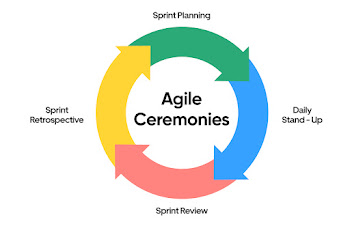Difference between blackbox and whitebox tests
The key difference between black box testing and white box testing lies in their approach to examining software functionality.
Here's a breakdown to clarify:
Black Box Testing:
Black box testing, also known as behavioural testing, treats the software as a black box. Testers are concerned with the external behaviour and functionality without considering the internal code structure. Black box testers typically don't require in-depth knowledge of the software's internal code. They focus on requirements, specifications, and user stories.
Black box testing is useful for:
- System testing and user acceptance testing.
- Usability testing.
- Smoke testing and sanity testing.
Black box testing techniques are:
- Equivalence partitioning
- Boundary value analysis
- Error guessing and
- User scenario testing
These techniques focus on input values, expected outputs, and system behaviour under various conditions.
Advantages:
- Black box testing reflects how actual users interact with the software, identifying usability issues and ensuring an intuitive user experience.
- By testing against requirements and specifications, black box testing verifies if the software delivers the promised features and functionalities.
- Testers don't need to learn the code-base, making black box testing potentially faster to implement.
- Black box tests can often be automated using scripts or recording tools, streamlining the testing process.
- Since in-depth knowledge of the code isn't required, black box testing allows testers with a broader range of skill sets to participate.
Disadvantages:
- Black box testing doesn't develop into the internal workings of the code, potentially missing logic errors or edge cases not covered by user scenarios.
- Black box testing might struggle to identify complex bugs buried within the code's logic.
- Clear and well-defined requirements and specifications are crucial for effective black box testing.
White Box Testing:
White box testing, also known as structural testing, examines the software from the inside out. Testers have a deep understanding of the code structure, logic flow, and internal workings of the software. White box testers require a strong understanding of programming languages, code structure, and software design principles.
White box testing is useful for:
- Unit testing.
- Integration testing.
- Test-driven development.
White box testing techniques are:
- Unit testing (testing individual modules)
- Code coverage analysis (ensuring all code paths are exercised), and
- Control flow testing (verifying logic under different conditions)
These techniques helps in development the code's functionality and implementation details.
Advantages:
- White box testing allows for very granular testing, ensuring code paths, logic branches, and error handling mechanisms are functioning correctly.
- By examining the code structure, white box testing can identify potential issues early in the development cycle.
- Focusing on code coverage and logic ensures the software is well-structured and functions as intended.
- When a bug is encountered, testers with knowledge of the code can pinpoint the root cause more easily.
Disadvantages:
- White box testing requires a significant investment of time and effort, especially for complex code-bases.
- Testers need a strong understanding of programming languages and software design principles.
- As the code evolves, white box tests might need to be frequently updated to maintain their effectiveness.
- White box testing might overlook usability issues that wouldn't be apparent from examining the code alone.



Comments
Post a Comment